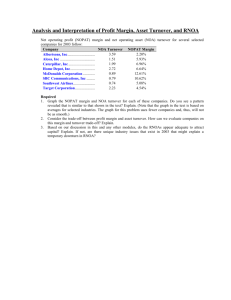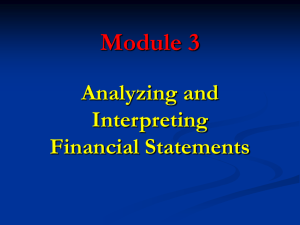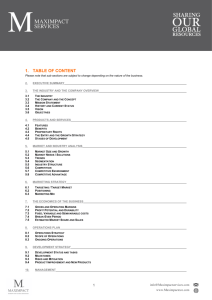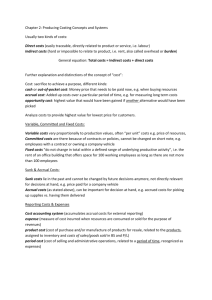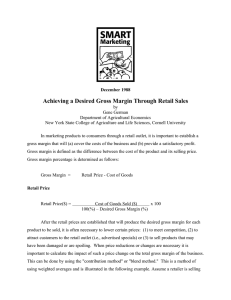Assignment 2 - Mr Lingard Economics & Business
advertisement
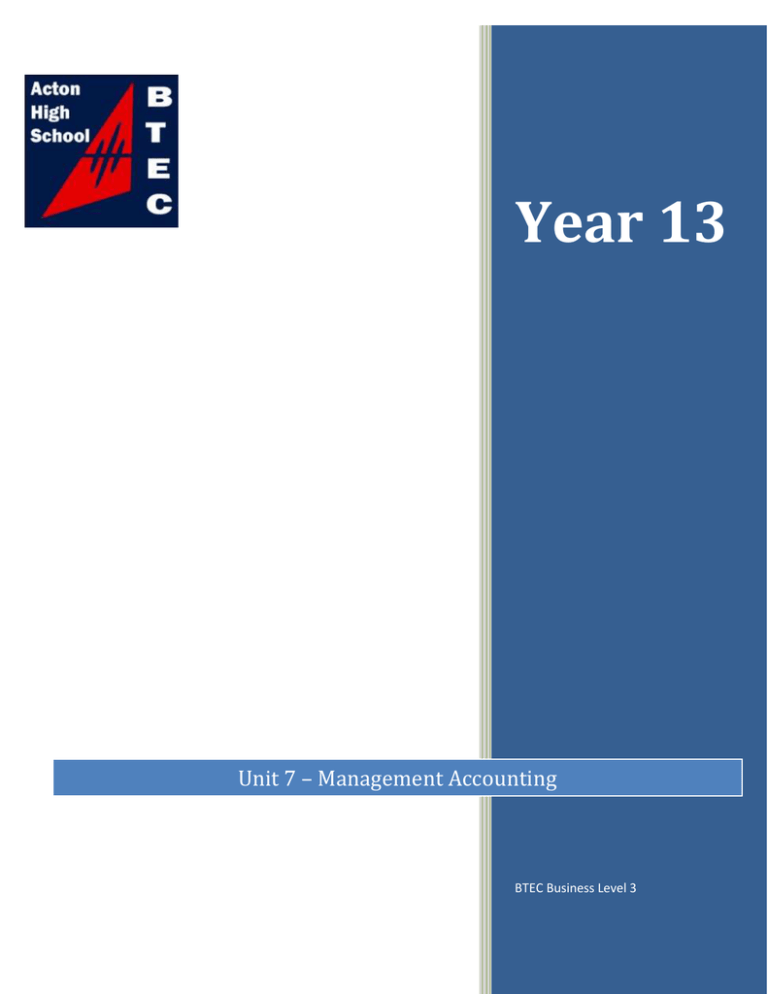
Year 13 Unit 7 – Management Accounting BTEC Business Level 3 Assessor name Student name Mr A Lingard Date issued Completion date 12th January 2016 26th January 2016 Qualification Edexcel BTEC Business Level 3 Business Submitted on Unit number and title (Credit Value) Unit 7 - Management Accounting Assignment title In this assessment you will have opportunities to provide evidence against the following criteria. Indicate the page numbers where the evidence can be found. Assignment title The purpose of this assignment is to: 3 Be able to use appropriate statistical information to review and predict business Performance Accounting data: previous period (sales, production costs, profits); information from published financial reports Statistical information: changes over time; moving averages; seasonal variations; price indices eg Retail Price Index (RPI); trends to assess and predict business performance Performance: ratio analysis; liquidity ratios (current ratio, liquid capital ratio); profitability ratios (gross profit mark-up, gross profit margin, net profit margin, overheads to sales margin, return on capital employed); efficiency (stock turnover days, debtors’ collection days, creditors’ payment days, fixed assets turnover ratio, net current asset turnover ratio); capital gearing; previous periods Scenario You are working as a trainee small business manager at a branch of a national bank. One of your first tasks is to advise a new business start-up under the supervision of your manager. This means that before you can advise the client your work needs to be checked for accuracy by your line manager. To do this your manager has set you a case study task based on a set of financial accounts. Sources of information www.businessstudiesonline.co.uk, www.tutor2u.net, www.ttimes100.co.uk Criteri a refere nce P3 M2 To achieve the criteria the evidence must show that the student is able to: use accounting data and statistical information to measure business performance Tas k no. Expected Evidence in folder Feedback assess the implications of different activity levels using the results of a breakeven analysis for a selected organisation Learner declaration I certify that the work submitted for this assignment is my own and research sources are fully acknowledged. Learner signature: Date: This brief has been verified as being fit for purpose Andrew Lingard Assessor Date Signature Internal verifier Nicola May Date Signature ACTION Y/N To be submitted onononresubmitted Final Grade Points 26th January 2016 Criteria met Y/N Task 1: Your manager has given you the annual accounts for Vodafone. To show that you understand how to interpret accounts you will need to answer the questions below P3/M2 – Accounting Information to assess business performance Profit and Loss 1. Comment on the performance (good and bad) of Vodafone using the following performance measures over the 3 year trend: Sales Cost of Sales Gross Profit Profit for financial year 2. What are the most worrying parts of this business based on its financial data? Why might these problems have occurred? 3. Define and explain the following statistical methods that can help a business to detect trends: a. Moving averages b. Seasonal variations c. Retail Price Index (RPI) 4. Complete a quick ratio analysis using the following grid: Ratio 2012 2011 2010 Meaning Gross profit ratio net profit ratio Current ratio Acid test ratio Stock turnover Average collection period Average payment period 5. Explain how the different factors below can influence the figures used in a budget: a. b. c. d. e. f. g. h. i. production sales costs profits in previous accounting periods changes over time moving averages seasonal variations price indices (RPI) performance and trends detected in previous accounting periods. Additional Information Ratio Formula Gross profit margin Net profit margin Gross profit Sales Net profit Sales x100 x100 overheads to sales Overhead expense (total) margin x100 Sales fixed assets Sales turnover Fixed assets net asset turnover Sales Net Assets capital gearing Equity Non-current liabilities Balance Sheet


